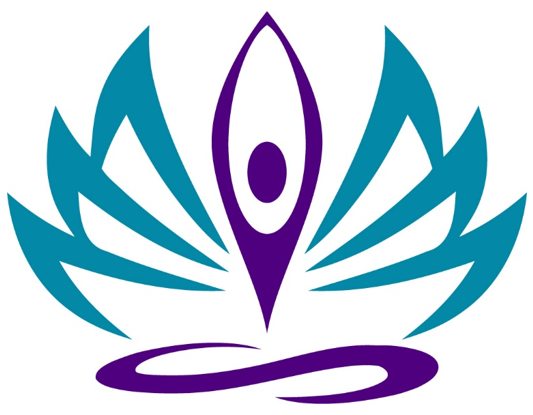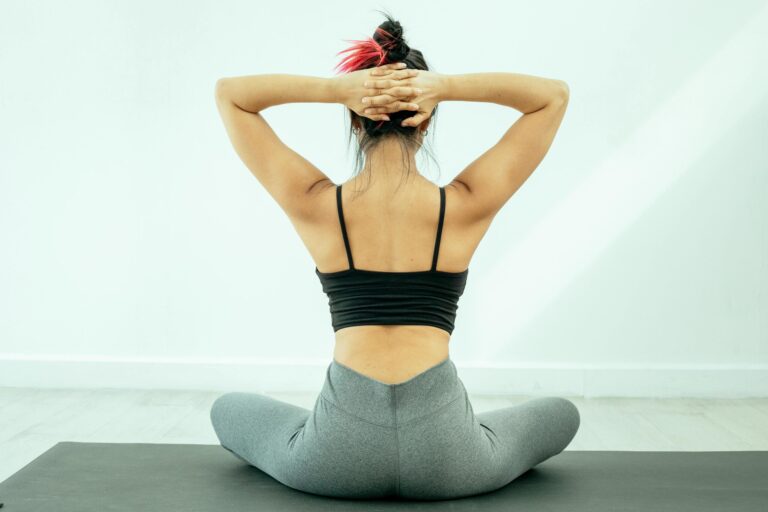Yoga against asymmetries in the body - understanding and balancing the left AIC/right BC pattern
The human body naturally exhibits asymmetries. We all have a certain dominance of the right side of the body, which is partly due to different neuronal connections to the left and right side of the body.
This fundamental asymmetry affects our posture, breathing and mobility - and can lead to restrictions or pain in the long term. The good news is that through targeted, mindful (asymmetrical) yoga exercises, these patterns can be consciously recognized and balanced out step by step.
Natural human asymmetry - What is the Left AIC/Right BC pattern?
The Left AIC / Right BC Pattern describes two interconnected patterns of tension and posture which, according to the Postural Restoration Institute (PRI) are fundamentally present in every human body.
Left AIC (left anterior internal muscle chain)
The Left AIC Pattern describes a typical rotation of the entire pelvic area to the right:
- The left pelvic blade is shifted to the front and increasingly rotated away from home.
- The right pelvic blade is drawn towards the right shoulder (higher than the left side) and is increasingly rotated inwards.
- This means that the Left hip often in flexion, the femur in inward rotation and adduction.
- The affected muscles (especially Psoas, iliacus, adductors and quadriceps) show increased basic tension.
- The Left diaphragm is restricted in its function as a respiratory muscle - it loses its dome shape.
- This means that the right diaphragm becomes more dominant and breathing becomes increasingly asymmetrical.
Right BC (right arm/chest muscle chain)
In response to the changes in the pelvis and diaphragm area, the upper body shows the Right BC Pattern:
- The Chest rotates to the left to compensate for the rotation to the right of the lower body.
- The Left half of the ribs on the front of the body is often widened (outward rotation), the right one compressed (inward rotation)
- The Right shoulder pulls forwardthe left rather to the rear
- There is increased tension in the right chest, shoulder and auxiliary breathing muscles on the front of the body
These patterns are not pathologicalbut functional. However, they can be caused by one-sided repetitive movement or posture, stress and our sedentary lifestyle. intensified and chronically compensated become. It is not uncommon for complaints to arise, particularly in the lower back, pelvis, sacroiliac joint, shoulders or jaw area.
Why yoga can help here
Yoga offers an excellent opportunity to gently regulate functional asymmetries. The aim is not to make everything "symmetrical", but to restore the balance between the left and right sides of the body - especially on the following levels:
- Develop awareness of asymmetries - through mindful sensing, targeted breathing and precise alignment
- Regaining freedom of movement - in particular the bilateral restoration of floor mobility, the right front of the chest (expansion) and the left abdominal and trunk muscles (active holding work)
- Promote functional breathing - through diaphragmatic and back breathing, which leads to a reduction and equalization of tension in the chest
Yoga exercises for balance with Left AIC patterns
I've recorded a short video to explain the Left AIC pattern and show you my favorite exercises to counteract it:
You can also do the exercises individually on your own:
1. Warrior I with raised back heel
(right front, left rear)
- Come into Warrior I: take a big step forward with your right foot. Your left heel is lifted so that you are standing on the ball of your foot. Your right leg is bent.
- You will notice that your right knee has a tendency to fall inwards. You can work against this by pressing your heel into the floor and thereby activating your right gluteal muscles.
- Align your pelvis as far forward as possible and really stretch your left leg completely.

This variation brings the left thigh into an active hip extension and simultaneously trains the pelvis to straighten. The position promotes strength development in the right gluteal muscles, improves the stretching of the left psoas and helps to balance out the right-rotated pelvic position of the left AIC pattern.
Practice only on the indicated side to really work against the asymmetry!
2. deep lunge - Anjaneyasana
- Come back into a deep lunge with your left leg.
- The left leg is stretched, the right leg is bent, ideally with a 90° angle at the knee. The knee is above the ankle.
- Press your right heel into the floor to activate the right gluteal muscles
- Rest your hands on the floor or on 2 blocks.
- Orient the pelvis towards the floor and sit deep in the pelvis without bending the back leg.
- Tighten your abdominal muscles slightly, as if you wanted to tilt your pelvis slightly backwards to get even more length in the front of your left thigh and in your back.

This asana promotes the extension of the left side of the pelvis and supports the length of the left psoas while simultaneously activating the right gluteal muscles. This gently corrects the forward shift of the left side of the pelvis and promotes the outward rotation of the right pelvic blade.
Conclusion: Yoga as a means of functional alignment
The Left AIC/Right BC pattern is not a pathological condition, but a functional pattern that we all have. Through targeted, mindful yoga, you can recognize imbalances and correct them over time. This will lead to better mobility and function of the skeletal-muscular system. The key lies in sensing, stabilizing and conscious breathing - not in "having to be symmetrical".
If you would like to learn more about functional asymmetries or would like to work on a specific asymmetry, please contact me for a private lesson where we can focus on it.







